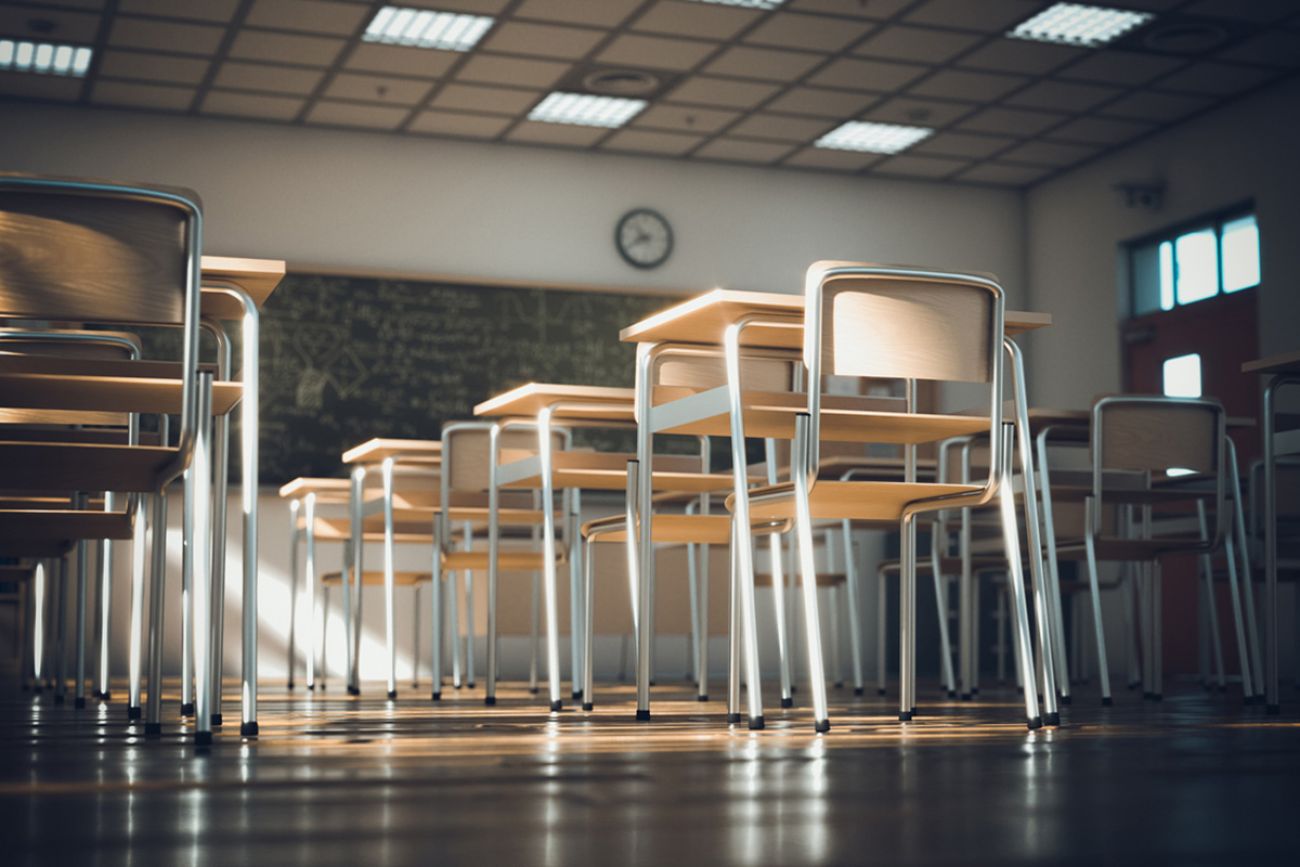Enrollment dropping, COVID relief over. Will more Michigan schools close?


As school boards across Michigan begin developing their district budgets for the 2024-25 school year, they’ll likely be confronted with some tough decisions about how to deal with enrollment losses.
School closures could be on the horizon.
A report this month from the Citizens Research Council of Michigan predicts the state’s population declines (and subsequent school enrollment losses) and the late September deadline for schools to have spent federal COVID relief money will lead to school closures.
That’s because the federal money, which amounted to about $6 billion for Michigan schools, provided a financial cushion that allowed district leaders to put off some tough decisions about enrollment declines. Their budgets, which must be adopted by June 30, must account for the loss of that money.
“When those federal resources go away, districts are going to have to right size their budgets,” said Craig Thiel, research director at the nonpartisan research organization.
Related:
- To fix education in Michigan, GOP senators push to resurrect old ideas
- How delays in college financial aid offers will affect Michigan students
- Michigan schools turn to $10K signing bonuses to solve teacher crunch
Michigan’s population is rapidly aging, while the number of students enrolled in public schools has declined dramatically in the last two decades. The state has lost 16% of the public school population since 2003. Enrollment during the 2022-23 school year was 1.4 million students.
The pandemic brought more significant challenges. Many districts lost students as some families chose to home-school their children and others enrolled their children in private schools. Enrollment in the Detroit Public Schools Community District, the state’s largest, is down 2,000 students, for a total of nearly 49,000 this school year.
Thiel recently talked to Chalkbeat about the report, for a conversation that was recorded for the research organization’s Facts Matter podcast. You can find that podcast, which also discusses another CRC report on debt relief the state provided for some financially troubled school districts, here. The below conversation was edited for length and clarity.
What is happening with Michigan’s population and how is that affecting students?
While the population is stagnant, within that broad population, there are some substantial changes. And what we’re seeing is that we’re becoming an older state. So our aging population is increasing, and it’s projected to continue to increase while our younger age cohorts decline, specifically our school-age population. So as we look forward, what we see is a continuation of the aging of our population. And so when we kind of focus into what that means … public schools are going to continue to deal with this declining enrollment challenge that they’ve been dealing with going back to about 2003. At that time, the state had about 1.7 million public school students enrolled. Today, we have less than 1.4 million. The vast majority of {Michigan’s 800 plus school districts} have dealt with some degree of declining enrollment, some to much greater degree than others.
Which areas of the state are seeing the biggest declines?
We’ve seen some hollowing out of our urban areas with people moving out of urban areas into ring suburbs and suburban areas. I’d also point out in our rural communities as well, population growth has been stagnant and also aging. So the number of school-aged children has been declining in those communities as well. So it’s not a geographic specific area of the state. It’s kind of across the state.
Should school closures be the answer to declining enrollment?
School buildings are physical infrastructures. They’re designed to accommodate a certain size of the student body in terms of the number of classrooms, the square footage. As enrollments decline, the cost of maintaining those facilities becomes much more expensive on a per student level. And, you know, that’s important because we largely fund school districts in the state based on the number of students who enroll. So as declining enrollment happens, there’s fewer resources, and then those resources have to be stretched further across larger physical footprints in the school district.
To what extent has the federal COVID relief {which directed about $6 billion to Michigan schools as part of pandemic recovery efforts}, delayed some of these difficult conversations in districts that have experienced steady enrollment losses.
The federal government has stepped in with this large infusion of resources to help districts manage through the challenges of keeping schools open, and then pivoting to helping students recover from the learning loss when schools were closed. And those dollars, you know, to some degree papered over these long-term trends of depressing state resources coming in. And when those federal resources go away, districts are going to have to right size their budgets. And when they do so they’re going to find out well, the declining enrollment has also reduced our ability to bring in resources. So it’s kind of a confluence of both factors, the long-term declining enrollment trend and the expiration of these federal resources that are going to bring some serious financial decisions to bear for local districts. There’s going to be this funding cliff that districts have to face in fairly short order when these federal dollars expire at the end of 2024 here.
You’re predicting school closures will be a necessity, but do you think schools will actually begin closing buildings?
It’s really difficult {for} decision-makers running schools because the effects are quite wide. Closing schools, especially when students aren’t redistributed to better schools can affect student learning and their progress, their educational attainment. They’re disruptive to families, as well as staff in those schools having to develop new relationships with new teachers, and new school personnel. And the broader community is affected because schools, as we know, serve a larger purpose than just providing educational services. They serve as a civic and social and cultural space for gathering. But the finances are really what are driving the need to look at school closures. And we’ve seen over the period of declining enrollment that districts have been closing buildings. We’ve seen about a 16% decline in the number of K-12 students in the last decade or so. And we’ve seen a similar reduction in the number of buildings of about 12% in the traditional public schools sector. So they are closing schools to meet the financial realities. Our report here suggests that, you know, while the federal resources have kind of put those decisions on the back burner, they’re going to bring them to the fore in the near term when the federal resources expire.
What about a district like the Detroit Public Schools Community District, where school closures historically have resulted in even more enrollment losses. In a city like Detroit, where parents have a number of options, can the district afford to close schools?
Detroit is probably a good example of where … there’s a number of other alternative service providers in the city who are situated nearby the traditional public school buildings. And with the challenges of transportation in the city, families are going to look to what’s nearby for enrolling their students. When the declining enrollment is hitting and school closures hit, there’s no guarantee that those students are going to re-enroll in the same public school district. They’re likely to look at an alternative provider, so then it’s going to likely be a larger net loss to the district in this instance. So there’s going to be some pressure to maintain the operation of that building. But the reality is that it’s going to be more expensive to run that building.
So how does a school board make that trade-off of deciding what’s more costly?
It’s going to take some very strategic thinking and looking at what’s happened in the past. it’s also going to require that district to make its case {about} the competitive effects.
Will the declining enrollment trend, coupled with the loss of the federal dollars, take us back to the days when many districts were in heavy competition with each other for students?
It does strike me as kind of an odd proposition if we were to see an expansion of competition back to what we saw maybe 10-20 years ago. If that happens, there’ll be some real efforts to quote unquote, steal students, because you’re chasing after a shrinking pie. I don’t have my crystal ball. So I’m not entirely sure what’s going to happen in terms of new actors coming in, in competing. I do know that, you know, about 50% of the resident student population in Detroit, is attending something other than the traditional public school district in Detroit. And that’s been about the same, more or less for a number of years. The competition is there right now. And I think it’s going to continue to stay there regardless of the declining enrollment trend here that we’re projecting for the next few decades.
Michigan has a number of small school districts. Can the state continue to sustain that if enrollment continues to decline?
School district consolidations have been very rare relative to school closures. But those discussions are going to have to come to the fore in {suburban communities}, but in rural communities as well. The state has encouraged districts to look at this as an option. It hasn’t mandated it. We’re a local control state; I don’t foresee a day when we’re going to mandate that. But the state has been encouraging it and incentivizing districts with some state dollars to at least investigate that. The other option that doesn’t get as much attention is kind of service sharing and service consolidation, where districts will still exist on paper and look like they always have, but really the services that are being provided are being done so jointly by the same personnel. So think of back office services that school districts provide like food and administration, curriculum development, transportation. Those aren’t as visible to the public.
Detroit and Flint school districts have made some tough decisions approaching the deadline. Would you have expected to see more widespread discussions across the state?
To some degree, the federal dollars have given decision-makers an opportunity to put these tougher decisions on the back burner, and haven’t brought them to the fore. Schools are going to be sitting down here and drafting their budgets for the 2024-25 school year in the next month or so. This declining enrollment, loss of federal funds need to be front and center for more school districts in the state, especially in terms of bringing in other voices to the decision-making process in schools.
Lori Higgins is the bureau chief for Chalkbeat Detroit. You can reach her at lhiggins@chalkbeat.org.
See what new members are saying about why they donated to Bridge Michigan:
- “In order for this information to be accurate and unbiased it must be underwritten by its readers, not by special interests.” - Larry S.
- “Not many other media sources report on the topics Bridge does.” - Susan B.
- “Your journalism is outstanding and rare these days.” - Mark S.
If you want to ensure the future of nonpartisan, nonprofit Michigan journalism, please become a member today. You, too, will be asked why you donated and maybe we'll feature your quote next time!


